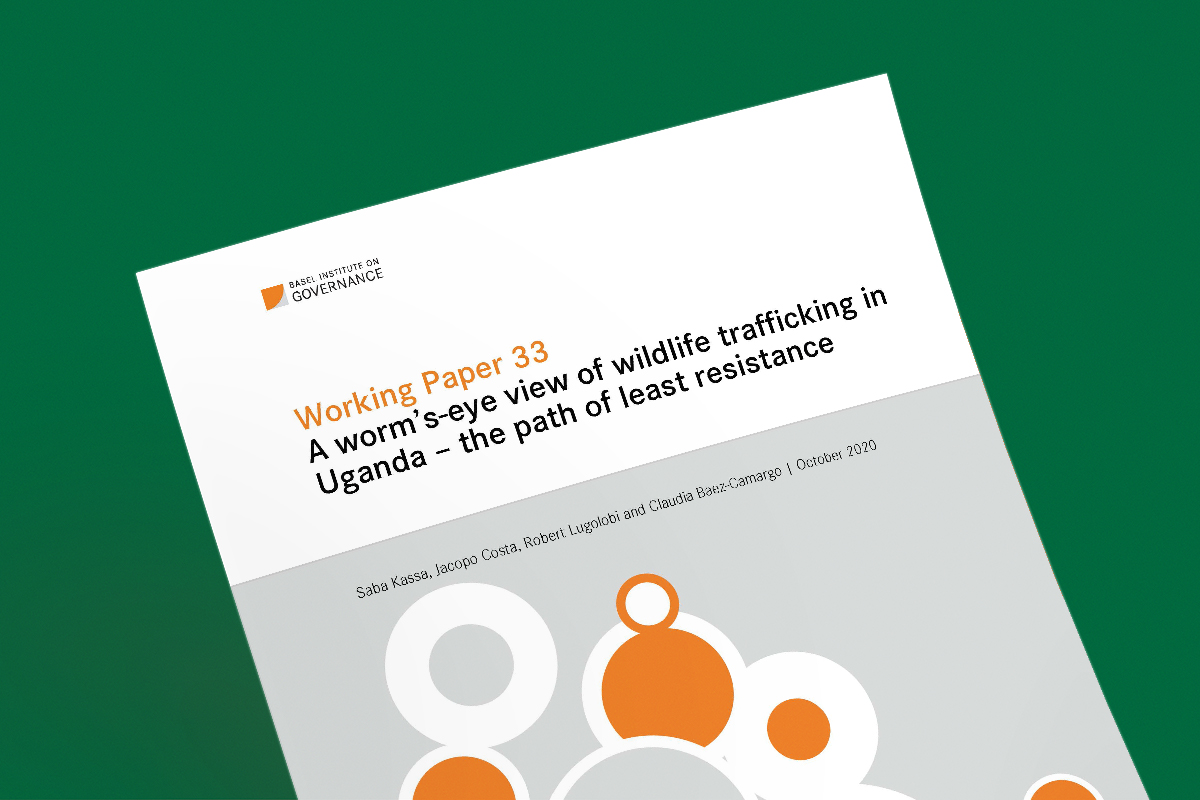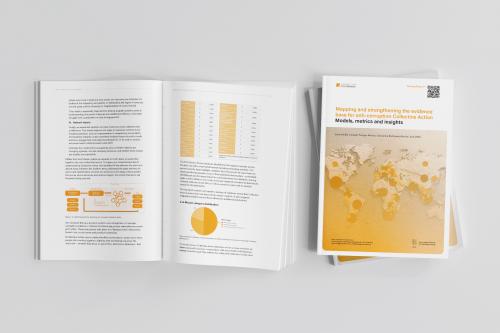New Working Paper on wildlife trafficking in Uganda – taking a worm's-eye view

My colleagues and I in the Basel Institute's Public Governance team, along with our local research partner Robert Lugolobi, have just released the findings of an 18-month research project into why and how wildlife trafficking happens in Uganda.
Our findings are based on 47 interviews and eight focus group discussions with international and Ugandan wildlife conservation, illegal wildlife trade and anti-corruption experts, members of reformed poachers’ networks and individuals living near wildlife habitats. It has been an eye-opening journey.
Our new Working Paper "A worm’s-eye view of wildlife trafficking in Uganda – the path of least resistance" digs deep into the dynamics feeding a multi-billion-dollar global illicit trade in wildlife and wildlife products. Uganda, a hub for wildlife trafficking in Africa, is the focal point of the analysis. It tackles a simple two-part question: why and how does wildlife trafficking happen in Uganda?
Money isn't everything
Our first thoughts may go to the poachers. Facing challenging socio-economic conditions, they may see participating in the illegal trade as an opportunity to make money for themselves and their families. Such assumptions are not wrong, our research shows. Individuals living near wildlife habitats, or along the first stages of the trading routes, often find that the opportunities to generate income and thereby overcome socio-economic hardships outweigh the risks of penalties and sanctions.
But the story does not end there. Equally important, if not more, is the broader governance context which allows illicit trade to flourish in Uganda. The research supports the hypothesis that where the rule of law is weak and corruption and impunity thrive, key prevention and enforcement measures against wildlife trafficking can easily be undermined.
At the individual level, the research also shows that utilitarian perceptions of wildlife, coupled with narratives of trafficking as a benign and legitimate form of informal trade that brings wealth and status, reinforce the social acceptability of participating in the trafficking and therefore help to fuel it.
The path of least resistance
Now how does Uganda become a hub for wildlife trafficking? This, our research shows, is because it is the path of least resistance. It is relatively easy for traffickers to establish an orchestrated and organised supply chain of wildlife products that move into, through and out of Uganda. A dynamic infrastructure of key people in key roles in key locations facilitate it. The social structure of the network means that these individuals can organise themselves as a collective and pursue a strategic goal.
Wildlife products enter Uganda through both official and unofficial borders, are concealed and consolidated and then exit the country, predominantly via road to Kenya or air via Entebbe Airport. To prevent these operations from being detected, investigated and sanctioned, traffickers rely on collusive relationships with public officials with relevant access and authority at local and central levels.
What this means for countering wildlife trafficking
To fight wildlife trafficking, therefore, the answer cannot only be found in and around the wildlife habitat. Fences cannot be built high enough, and rangers cannot be equipped well enough, to compensate for and overcome the underlying structural drivers of weak governance systems and constrained socio-economic contexts that provide the macro-level conditions for all sorts of illegal activities, including wildlife trafficking, to flourish in Uganda.
Efforts by both national governments and international bodies to curtail wildlife trafficking should therefore also consider, account for and address the underlying structural problems of high levels of poverty and corruption that provide a conducive environment for illicit activities and economies.
In these efforts, practitioners can build on lessons learned:
- In developing strong governance systems in public offices in Uganda through the “islands of integrity” approach. Even in highly corrupt environments, there can be public institutions that are successful at reducing corruption. Examples can be found in the healthcare sector and tax services. If programmes could be developed such that investing in preserving the wildlife habitats and the wildlife itself could be aligned with government priorities, this could provide entry points to better conservation in parks.
- From addressing the functionality of corruption and the role of illicit economies for political elites in maintaining political power, as explored in our informal governance website. For instance, by capitalising on political windows of opportunity that may provide entry points for shifts in tone, action and approaches of the government to fight wildlife trafficking. There is the potential to frame the issue in the context of key developmental priorities such as the economy, social welfare, corruption and financial crime, natural resource management, environment and peace and security.
- From the development of alternative economic opportunities that make it less attractive for individuals to support wildlife trafficking, such as this project supported by the Uganda Wildlife Authority in Buhoma-Bwindi Impenetrable Forest National Park. In other words, by providing alternative sources of livelihood or income-generating activities associated with wildlife habitats and learning from successful conservation efforts that have high levels of community support around them. This example from Liwonde National Park in Malawi shows how community development can be an integral aspect of park management.
- From information or edutainment campaigns designed to challenge conventional wisdom. For example, wildlife trade specialist organisation TRAFFIC is using social and behavioural change communications to reduce the motivations for the consumption of illegal wildlife products. Public awareness campaigns could disseminate stories and illustrative examples that challenge prevailing beliefs about wildlife and make it less socially acceptable to support wildlife trafficking. The messages could potentially be reinforced through positive role models. A parallel example of behavioural interventions to reduce petty corruption can be found in a GI-ACE research project we are leading in the Tanzanian health sector.
About our research
We are grateful to PMI Impact for funding our research as part of a wider project aimed at preventing corruption from fuelling illegal wildlife trade along the East Africa – Southeast Asia axis. We believe it fills a crucial gap in the literature and will add to the evidence base as we grow our Green Corruption programme, a multi-disciplinary engagement at the Basel Institute that targets environmental degradation through our tested anti-corruption, asset recovery and governance methods.




